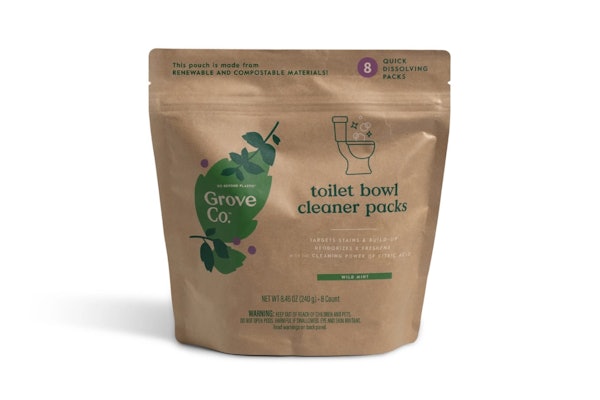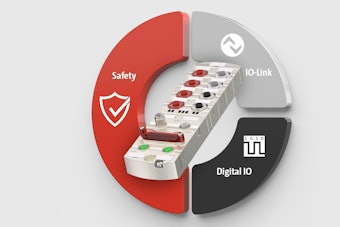While the pharmaceutical packaging community scrambles to comply in the home stretch of DSCSA regulations coming into force in Nov. 2023, many are focused on “what’s digital”—interoperable systems, data storage, formatting, and sharing.
But experts reminded attendees at the recent AIM Virtual Summit panel on auto ID technologies and supply chain traceability not to overlook something more tangible: the case label itself. [Editor's note: some responses were edited for brevity.
As Brian Schmidt, principal IT generalist at McKesson, explained, pharma manufacturers spend a lot of time making sure that the unit of use bottles are good-looking and durable to last the test of time to avoid disruptions, but they often pay little attention to the case labels. “As the cases or pallets of cases move through the supply chain, each one of those case labels is just as significant as the label that's printed on the unit of use bottles,” he said. (The full panel video, including discussion of auto ID technology will be available for viewing soon here.)
Currently, if they’re not able to read those labels, they can place an internal label on the package to move that package through the supply chain. He said, “But going forward, if we're not able to read those serial numbers and the information on the case, there's a disruption. That product needs to be quarantined, researched, and looked at. That's the next thing that we're going to need to pay attention to as an industry.”
He said there have been conversations about what happens when this label falls off, and not only will this prevent them from moving product, but they’ve even had instances where the color fades. “You have marketing get involved with some of the packaging labels—and they're really innovative with special colors of pink and light sienna and other colors—and we've seen packages that have been serialized early on that their labels are starting to fade and we just can't read them anymore. These kinds of things are what we, as an industry, need to continue to keep at the forefront, and to improve upon as we move forward.”
Lori Bitar, market development manager, medical device and pharma at FLEXcon (global manufacturer of pressure-sensitive film products) has discussed the important issue of label failure with a colleague, particularly with regulations and changes in materials and container types. “It's very important to identify all of that upfront, because that's the trunk of the tree that holds all of this other great technology,” she said.
SpotSee’s president and CEO Tony Fonk agreed that while the label has historically been a bit of an afterthought, it's now becoming the “center of everything” as a result of track-and-trace requirements and new technologies coming online.
“What's amazing to me is it's not only identification, it's verification. There's a lot of other information that you can get from it. It's no longer just the printing of a serial number,” he said. He highlighted the use of QR codes for patients, who can scan a code and get information all the way down to dosage for their particular product and videos on appropriate administration. “There's just so much more power in what we describe as a label beyond just identification and track-and-trace.”
Looking forward, Fonk gets most excited about where technologies can be applied to help manufacturers identify whether the cold chain remained intact, where excursions took place, etc. “We've talked about beyond the wholesaler, it gets really fragmented really fast. There's a lot of variables when it comes to temperature, time, traffic, etc., that can cause a problem. We want to bring that intelligence to the label, as well. The label is becoming this wonderful brain of any shipped item-level device or pharmaceutical. And I think there's plenty more to be discovered.”
Echoing the sentiments above, Fonk added that with DSCSA regulations, if you lose a product’s identification label, it's as good as gone. “You really can't do much with that medication if you can't turn around and re-verify that. So, [the label] is as important as the medicine itself, which is pretty amazing.”
Where does the data go?
Ultimately, the goal is for data to be used in an interoperable database. As Fonk noted, in layman's terms, it’s like creating a highway. “I envision this highway that spans from manufacturer to wholesaler through 3PL and into the dispensary, and ultimately at the hands of the patient. Of course, DSCSA is limited—it doesn't go to the patient, but it's illogical to think that we can't go there. We have to go there, especially with more and more home delivery.”
He said the highway has two layers: the confidential layer and what he called “the benign but helpful" data. He added, “There will be many kinds of useful information that will be able to be shared across that entire supply chain that's only gonna make us better.”
He highlighted extension beyond DSCSA and regulations, particularly with 75% of the pharmaceuticals shipping around the world covered by some form of track-and-trace or evolving track-and-trace legislation. “When you start to think about the information that way, you start to think about how we get the pharmaceuticals to developing countries and individuals in developing countries,” Fonk said. “This super highway of data… we're gonna be able to say, ‘Well, what's the most efficient way to get it there? Where are we seeing the most problems?’ All that will help us be much more efficient and precise in terms of getting people healthcare throughout the world, not just the United States.”
In the U.S., the manufacturer bares the sole responsibility for serialization and labeling. “Back to the relabeling, we're not able to relabel as a wholesaler to move the product through the supply chain, because we don't have the authority to do that anymore,” Schmidt said. Speaking from the wholesaler perspective, he explained they have to verify the information they receive from the manufacturer is correct—no small task with around 1.4 billion serial numbers, he noted—but they also have to break those cases down into individual units and be able to tell dispensers that they received, for example, a hundred different products in their shipment and here are their unique serial numbers. Then the dispenser must be sure those numbers are correct. “That's just part of the challenges with the U.S. [regulations]. But I think the neat thing is that it's bringing the industry together to really realize how we can collaborate to achieve a common goal. The law was very specific that each partner in the supply chain has a very specific requirement to fulfill,” he explained.
From identifying counterfeits to quality excursions
In thinking about what the data does for the industry and for patients, panelists mentioned a range of benefits.
Recalls: Beyond the primary task of a serial number to track products and communicate with downstream partners, Schmidt said recalls are an obvious pursuit. “When we look at recalls right now, they’re done at the lot level. At that level, it could be a lot of a hundred thousand bottles or millions of bottles, depending on the run of the product. Unfortunately, those do have impacts to the supply chain today,” he explained. “Going forward, the industry is looking at recalling not just on a lot, but very specific serial numbers. So, the manufacturer has cause to say, ‘Hey, this anomaly happened only for these serial numbers in the lot.’ Presumably in the future with FDA approval, of course, we could limit the recall to those specific serial numbers.”
Diverted product: Beyond product quality recalls, Schmidt noted that drugs can be stolen, at times by the truckload. In that scenario, they could identify the individual serial numbers that were absconded with, and report them to the FDA and trading partners if needed, to let them know those numbers should be marked as suspect.
Cold chain: Fonk said that for cold chain monitoring today, the most efficient method for monitoring a truck or pallet may be a data logger monitoring a corner of the truck. This may mean that product is affected in one area of the truck but not the rest. Depending on logger placement, this monitoring may indicate that all the product in the truck is bad because it's looking at it in the aggregate.
“These tools, this highway, this information, and new methods allow us to monitor down to the unique pharmaceutical level. The reason I share this is it's starting to combine the benefits—we're looking at the DSCSA as a benefit to being able to make the entire supply chain more efficient," Fonk said. Instead of throwing away or returning a whole pallet of medicine, a company could identify which serial numbers were affected and the recipient could pull only those aside. Then the supply chain continues to flow. "So there's a lot of value in being able to monitor and again, these technologies are enabling us to do that, but allowing us to monitor all the way down to that level. And when I say the technologies, beyond just the individual label, [it's also] the reader capability of everybody in and throughout the supply chain. So, really exciting stuff.”
The webinar was recorded and will be made available soon on the AIM YouTube Channel here.




























